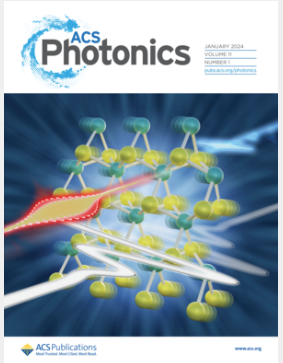IF 6.5
1区 物理与天体物理
Q1 MATERIALS SCIENCE, MULTIDISCIPLINARY
引用次数: 0
摘要
CsPbBr3 单晶体作为室温半导体辐射探测器最有前途的候选材料之一,已经引起了广泛关注。然而,目前基于溶液生长的 CsPbBr3 单晶存在形成次生相(CsPb2Br5)和由于生长温度高于相变温度而导致晶体出现应变裂纹的问题。本研究在前驱体中引入了 4-溴丁酸(BBA)作为添加剂,从而有效抑制了次生相的形成,同时降低了晶体生长温度。使用 BBA 生长的 CsPbBr3 单晶的晶体质量得到了改善,(200) X 射线摇摆曲线(XRC)的半最大值全宽低至 0.025°,空穴迁移率-寿命乘积(μτh)高达 0.57 × 10-4 cm2/V。此外,57Co γ 射线光谱的能量分辨率提高到了约 15.2%,这表明使用 BBA 生长的 CsPbBr3 单晶的传输特性得到了极大改善。这项研究表明,有效抑制 CsPb2Br5 次级相可能是光谱仪级 CsPbBr3 探测器最重要的问题之一。本文章由计算机程序翻译,如有差异,请以英文原文为准。

Suppression of Secondary Phases with Additive Engineering for the Spectrometer-Grade CsPbBr3 Single Crystals
CsPbBr3 single crystals have garnered significant attention as one of the most promising candidates for room-temperature semiconductor radiation detectors. However, the current solution-based growth of CsPbBr3 single crystals suffers from issues of the formation of secondary phases (CsPb2Br5) and strain-induced cracks in crystals due to high growth temperatures above the phase transition. In this study, 4-bromobutyric acid (BBA) as an additive was introduced in the precursor, which leads to an effective suppression of secondary phase formation and simultaneously a reduction of the crystal growth temperature. The CsPbBr3 single crystals grown with BBA exhibited improved crystal quality, with a full width at half-maximum of (200) X-ray rocking curve (XRC) as low as 0.025° and a high hole mobility-lifetime product (μτh) of 0.57 × 10–4 cm2/V. Moreover, the energy resolution for 57Co γ-ray spectra was improved to around 15.2%, indicating a great improvement in transport properties for CsPbBr3 single crystals grown with BBA. This study suggests that the effective suppression of the CsPb2Br5 secondary phase is likely one of the most important issues for a spectrometer-grade CsPbBr3 detector.
求助全文
通过发布文献求助,成功后即可免费获取论文全文。
去求助
来源期刊

ACS Photonics
NANOSCIENCE & NANOTECHNOLOGY-MATERIALS SCIENCE, MULTIDISCIPLINARY
CiteScore
11.90
自引率
5.70%
发文量
438
审稿时长
2.3 months
期刊介绍:
Published as soon as accepted and summarized in monthly issues, ACS Photonics will publish Research Articles, Letters, Perspectives, and Reviews, to encompass the full scope of published research in this field.
 求助内容:
求助内容: 应助结果提醒方式:
应助结果提醒方式:


